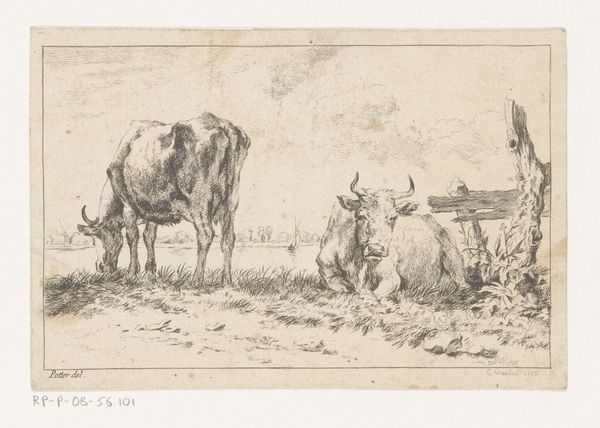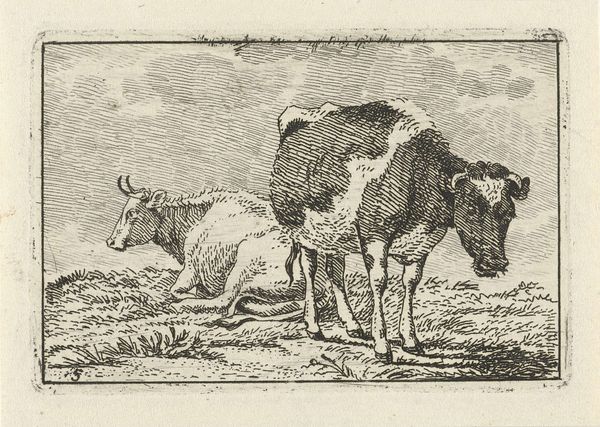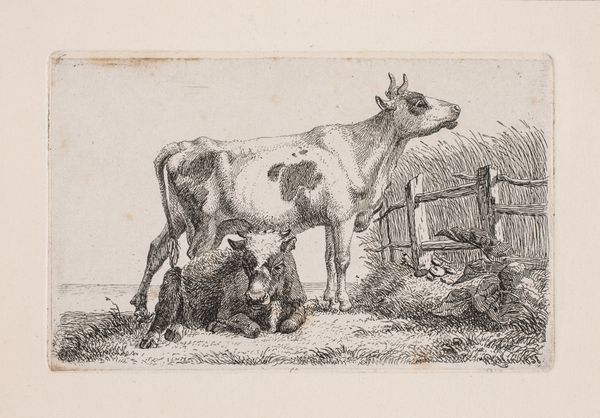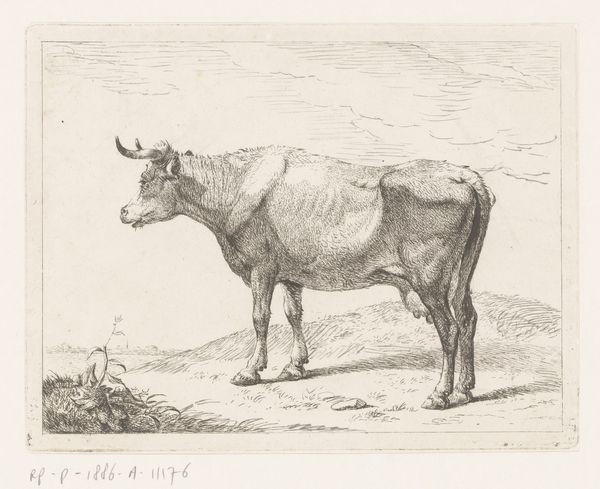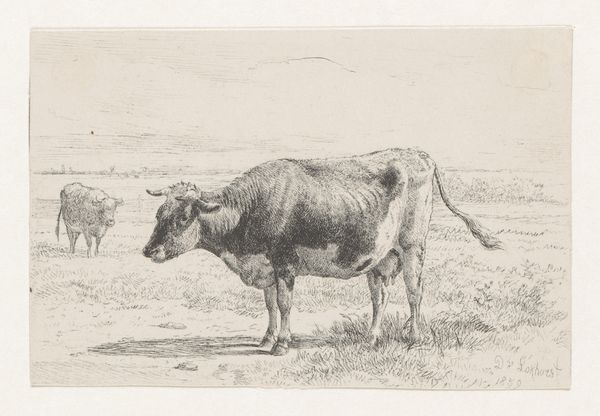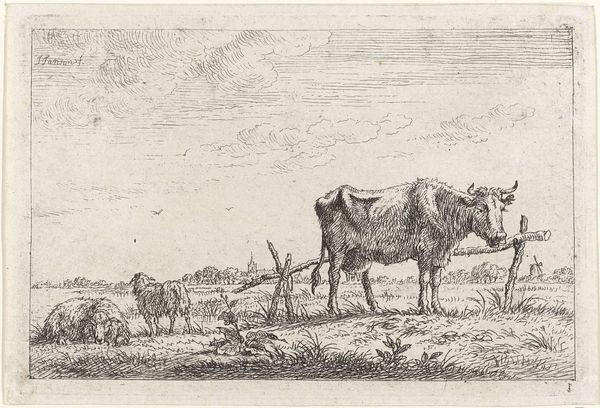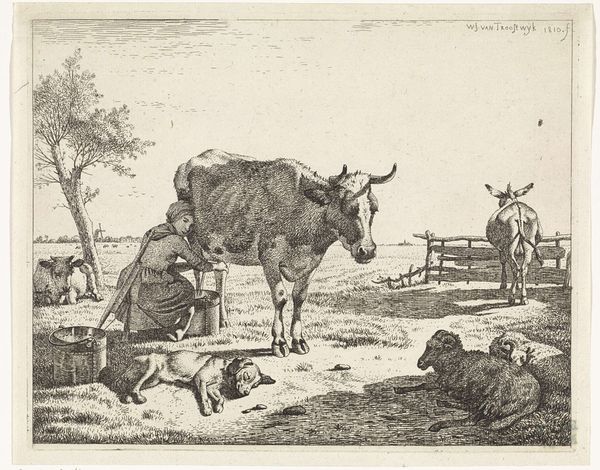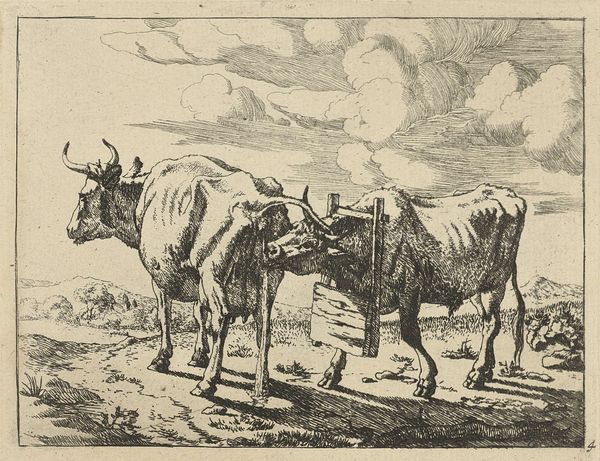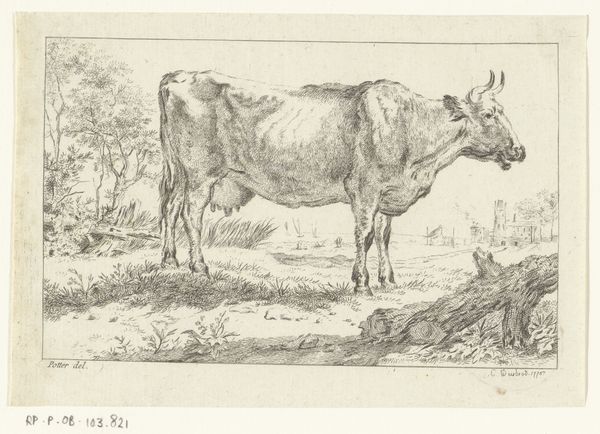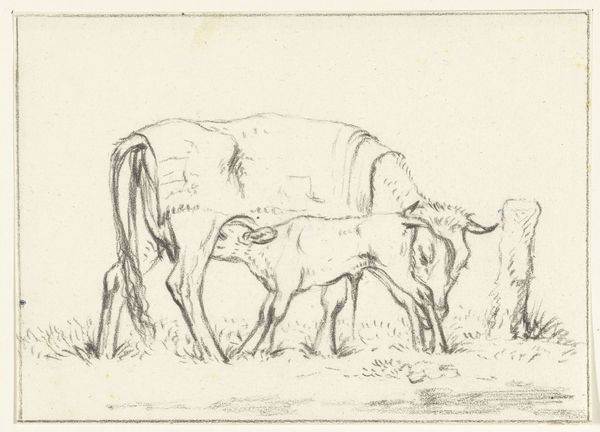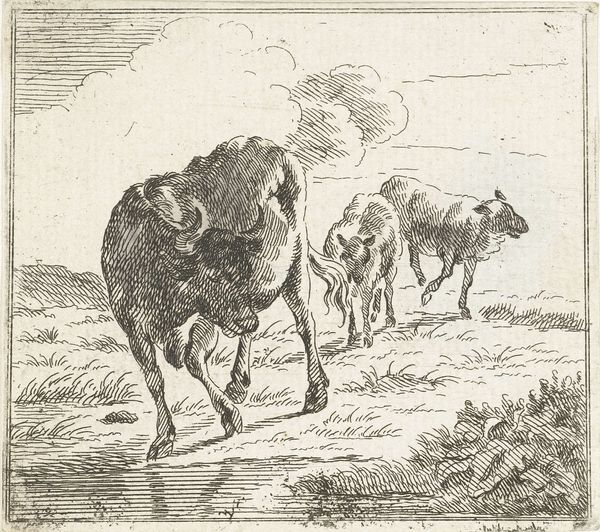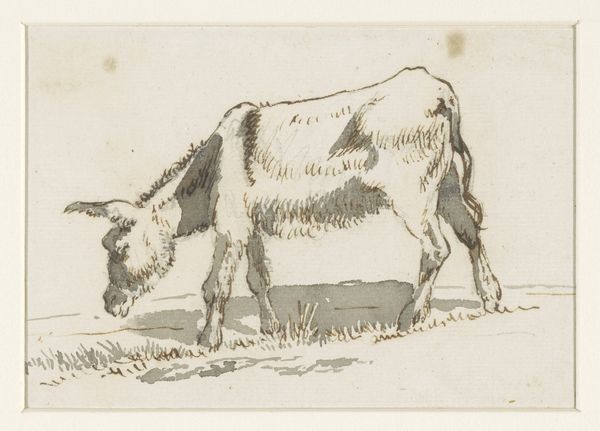
drawing, pen
#
drawing
#
pen illustration
#
landscape
#
pen-ink sketch
#
sketchbook drawing
#
pen
#
genre-painting
#
realism
Dimensions: height 65 mm, width 124 mm
Copyright: Rijks Museum: Open Domain
Jan van Noort created this etching, "Weide met drie koeien," which translates to "Pasture with three cows," sometime between the late 18th and early 19th centuries. The etching process involves covering a metal plate with a waxy, acid-resistant layer, and then scratching an image into that layer with a needle. The plate is then bathed in acid, which bites away at the exposed metal, creating an incised drawing. The plate is inked and printed onto paper, resulting in a delicate, detailed image. In this case, the artist skillfully used the etching technique to evoke the simplicity of rural life. You can almost feel the weight of the cows, and the texture of their hides. With the barest of means, Jan van Noort creates a convincing pastoral scene, reflective of the economic realities of the time, and emphasizing the relationship between humans, animals, and the land. Considering materials and making helps us appreciate not just the image, but the labor, skills, and social context that produced it.
Comments
No comments
Be the first to comment and join the conversation on the ultimate creative platform.
